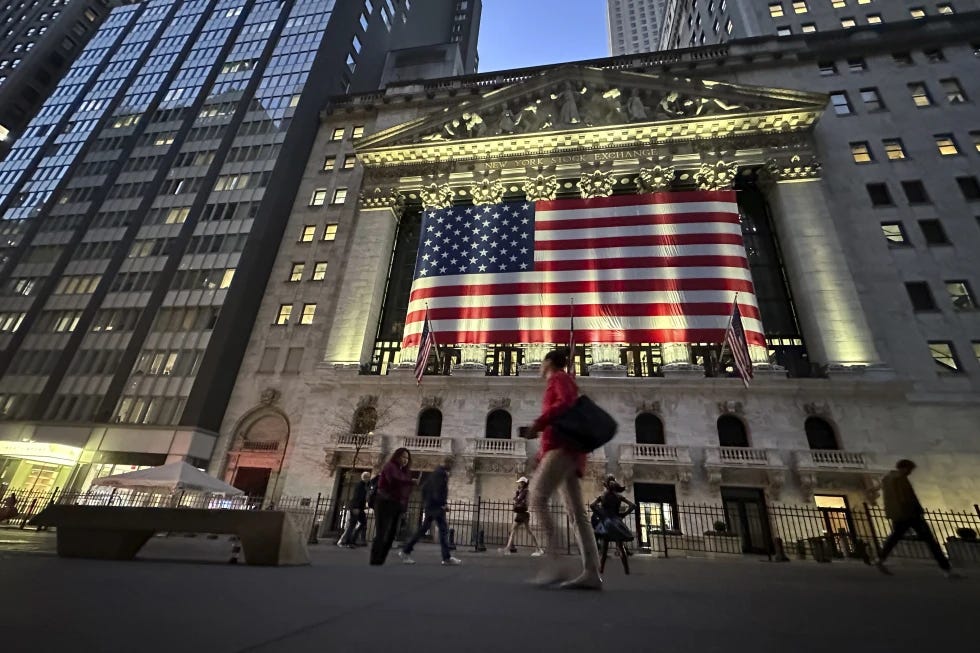The Great Disconnect: Navigating a Market Torn Between AI Euphoria and Economic Reality
The U.S. stock market is standing at a precarious crossroads, defined by a profound disconnect between euphoric sentiment and unsettling economic realities. The Federal Reserve has just delivered a long-awaited pivot, cutting interest rates by 25 basis points in a nod to rising labor market risks. In a normal world, this would be an unambiguous signal for investors to pile into equities. But this is not a normal world.
Despite the dovish shift, a palpable sense of unease permeates the market. The S&P 500 is trading at a dizzying valuation, with a Shiller P/E ratio pushing 40, a level historically associated with major market peaks. Below the surface of strong headline GDP forecasts and robust retail sales, cracks are beginning to appear in the economy's foundation.
This has created a tense tug-of-war between two powerful forces: the unstoppable narrative of an AI-driven technological revolution and the creeping dread of a consumer-led slowdown, all under the shadow of escalating geopolitical friction.
The Bull Case: A Dovish Fed and the AI Engine
The argument for continued market strength rests on two primary pillars.
First, the Fed's policy pivot. The recent rate cut, with a dot plot signaling potentially another half-point of easing before year-end, provides a powerful tailwind for stocks. This "risk management" cut signals that the central bank's primary concern is shifting from taming inflation to preemptively supporting a softening labor market. For the high-growth technology and AI stocks that have led the market's charge, lower interest rates are like oxygen, helping to justify their lofty valuations and reducing the cost of capital for future innovation.
Second, the AI revolution is not mere hype; it is a structural economic engine that continues to fire on all cylinders. This is not a cyclical rally that will fade with the business cycle. It is a technological paradigm shift. The immense capital expenditure in AI hardware and infrastructure is creating real growth and productivity gains, providing a fundamental basis for the sector's outperformance, independent of broader economic woes.
The Bear Case: Cracks in the Foundation
However, a growing chorus of bearish indicators suggests this optimistic outlook may be built on shaky ground.
While headline data appears strong, the canaries in the coal mine are beginning to sing a worrying tune. Consumer health, the bedrock of the U.S. economy, is showing clear signs of strain. Student loan and auto loan delinquencies are surging, with defaults in the subprime auto sector now reportedly surpassing levels seen during the 2008 Great Financial Crisis. Leading indicators of discretionary spending, such as tourism in Las Vegas, are showing sharp declines, signaling that consumers are pulling back.
Perhaps the most ominous sign is the "trouble in paradise" brewing in the bond market. In a direct contradiction to the Fed's dovish move, long-term Treasury yields have been rising. The 10-year yield is threatening to re-test, and potentially breach, the 5% level. This is a critical threat. Rising long-term rates directly challenge the high valuations of the S&P 500 and signal that the bond market is deeply concerned about either stubbornly persistent inflation or the enormous weight of government debt issuance required to fund deficits. The Fed may be cutting short-term rates, but the market is demanding higher compensation for long-term risk, effectively tightening financial conditions and threatening to burst the equity bubble.
The Geopolitical Wildcard: The Dragon in the Room
Overlaying this complex economic picture is a volatile geopolitical landscape. High-stakes discussions between the U.S. and China loom, with contentious issues like the future of TikTok, restrictions on AI chip exports to China, and broader trade tariffs on the table.
This is not a background risk; it is a primary catalyst for market uncertainty. The trade war has the potential to snarl supply chains, trigger retaliatory measures, and inject a level of unpredictability that can instantly sour investor sentiment, regardless of domestic economic data. In a world burdened by record sovereign debt and escalating geopolitical tensions, the appeal of traditional fiat currencies is waning for some of the world's most influential investors. This is driving a renewed interest in safe-haven assets like gold and other non-fiat alternatives, reflecting a deep-seated anxiety about the stability of the current global financial order.
Conclusion: A Market at a Tipping Point
The stock market is caught in a battle of narratives. The powerful, long-term promise of the AI revolution, now backstopped by a more accommodative Fed, is wrestling with the immediate, tangible risks of a weakening consumer, rising long-term borrowing costs, and profound geopolitical instability.
The path forward is unlikely to be a straight line. Investors should prepare for a period of heightened volatility and divergence, where AI-related sectors may continue to thrive on their unique secular growth story, while the broader, more cyclical parts of the market remain vulnerable to a slowing economy. The great disconnect between market euphoria and economic reality cannot last forever. The key question for the coming months is which side will be forced to bend to the other's will.


